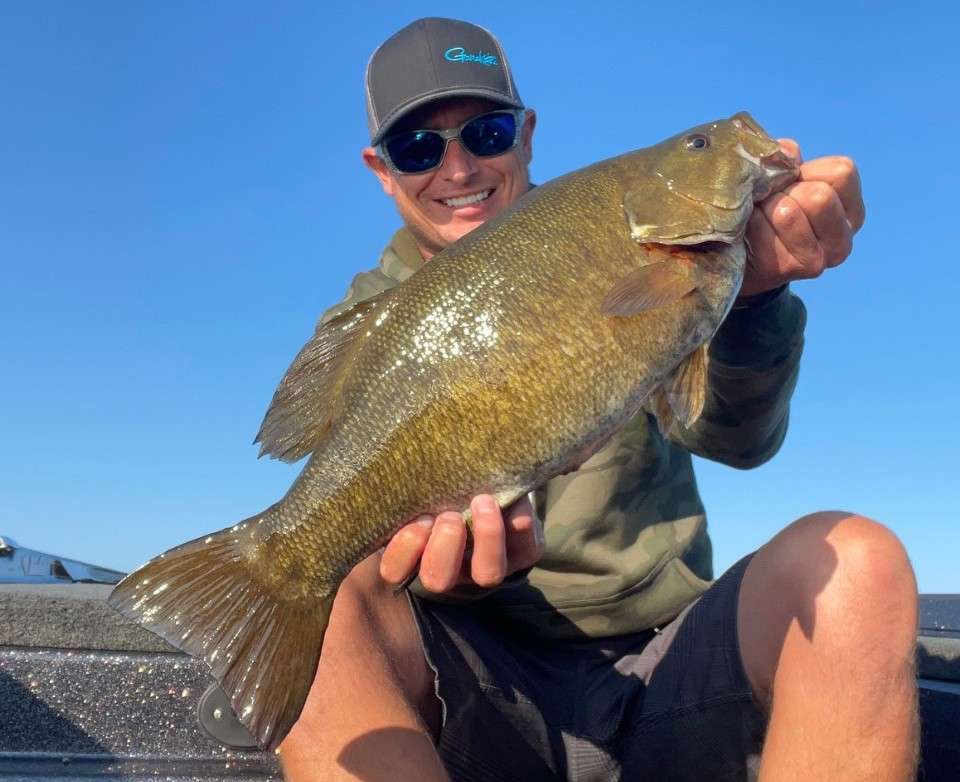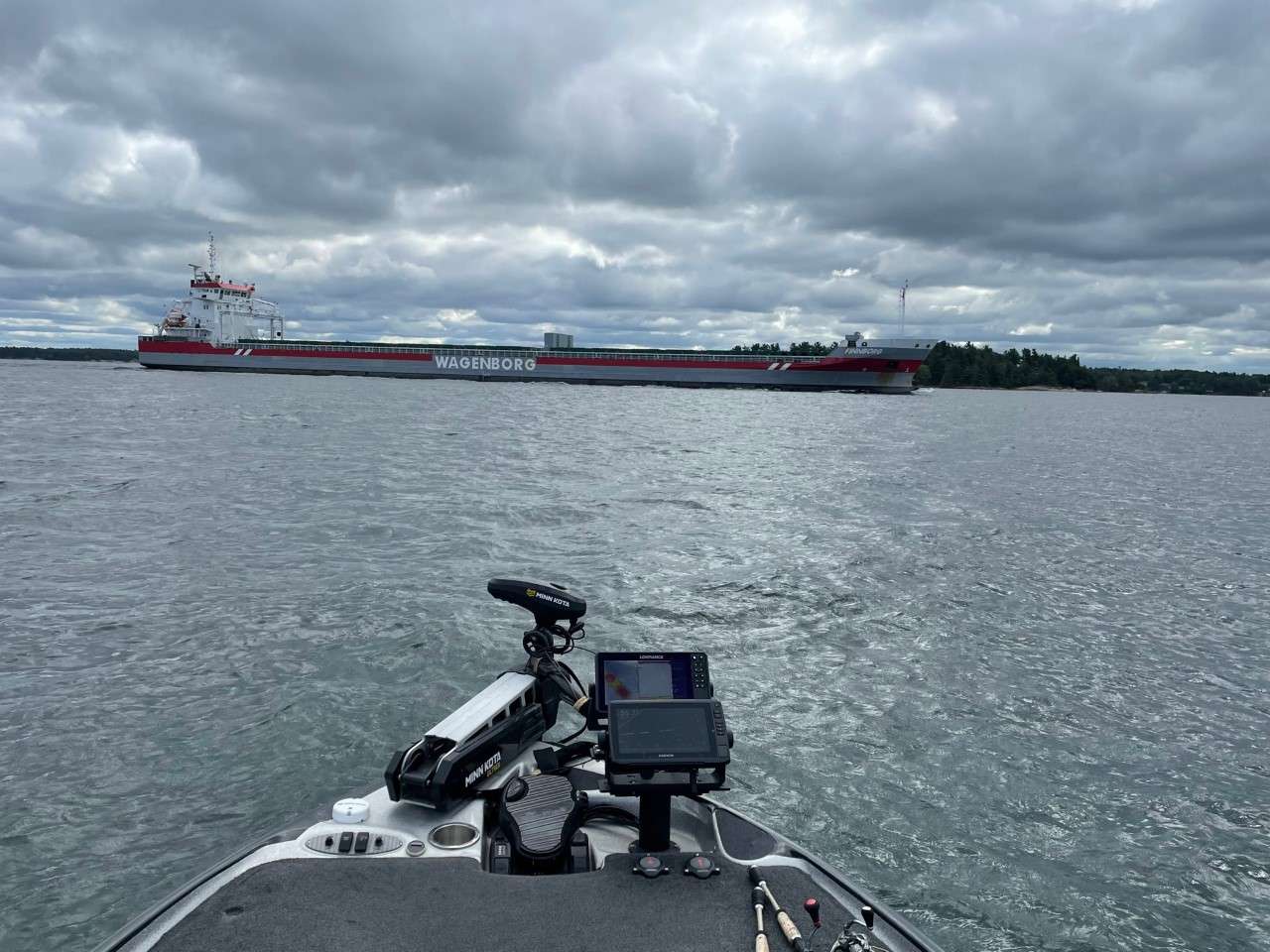
After fishing the Basspro.com Bassmaster Northern Open on 1000 Islands out of Clayton, N.Y., I realized that fishing a swift current river connected to a Great Lake is a totally different ballgame than fishing any other body of water in the country. (I’m from Oklahoma.)
I spent 12 days practicing and competing, and even though I cashed a check and finished in 28th place, I was realized that I was inadequately prepared to handle the big water. Here are some of the key things that I wish I had known before I headed north:
Quality footwear (not flip flops)
I’ve always worn flip flops in the boat, but in rough water flip flops don’t provide enough support. My feet were sliding around in the flip flops, and my footing was unstable. I switched to a light, waterproof hiking shoe and the difference was incredible when it came to stability and comfort in the big waves.
Proper mapping
Everything is bigger on the Great Lakes, and trying to find fish on Lake Ontario without the best available contour lines was literally like searching for a needle in a haystack. I didn’t even realize that I had bad mapping until a fellow competitor showed me his mapping during pre-practice. I immediately ordered a chip that covered both the United States and Canada, and the difference was incredible.
Bug spray
Between the mosquitos and biting flies, I nearly went insane swatting at my ankles and legs until I stopped by the convenience store and purchased some insect repellant. In the middle of open water, the fish slime attracts a crazy number of flies.
Wind app on phone
Wind direction and speed is critical when it comes to fishing big water for both fishing and safety. I found that the wind direction and speed from basic predictions was unreliable, and I got caught miles offshore when the wind switched direction and started blowing. Downloading the Windy App on my iPhone really helped me decide where and when I could run the big lake.
Let someone know where you’re going that day
The further you go into Lake Ontario, the less cell service you have. I’m used to fishing bodies of water where there are docks, marinas and other signs of human life. When you’re fishing alone 20 miles offshore, it can be a lonely feeling. After getting stuck in 6-plus foot waves one day in practice, I started telling at least one fellow competitor the general area that I was planning to fish that day. This was just in case something happened they would know where to start the search.
Bring more than you think you’ll need
When it comes to smallmouth fishing up north, it’s hard to beat the basics like a drop shot or Ned rig. I practiced for 10 days prior to the start of the tournament, so I was on the water for 12 days when it was all said and done. I thought that I brought enough drop-shot weights and baits, but five days in I realized that I had to start rationing if I was going to make it through the tournament without running out. I had roughly 50 of the correct-sized drop-shot weights when I arrived, and I finished the tournament with just three.
Research where the ramps are
There is no such thing as a “short run” on 1000 Islands and Lake Ontario. There are all sorts of both public and private boat ramps scattered throughout the area. After burning through a full tank of gas each of the first three days of practice, I started trailering to ramps closer to areas that I planned to explore. That allowed me to idle more and fish longer without worrying about fuel. It also allowed me to fish areas during windy days without putting myself or my equipment in jeopardy.
From Best On Tour, a weekly newsletter focusing on professional bass fishing and the business side of the fishing industry. Sign up for free at bestontour.net.





